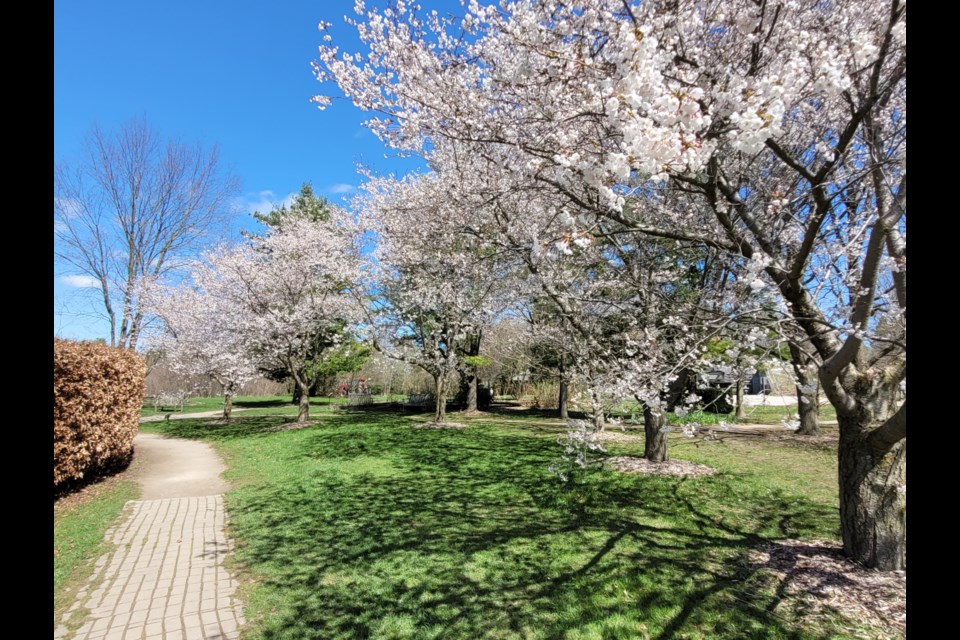Nothing says spring like the bursting of cherry blossoms.
Famous for their breathtaking pink and ivory flowers, sakura cherry blossom trees are ‘blooming full blast’ at the University of Guelph Arboretum.
A gift from the Japanese government dedicated in 2005, the trees are meant to symbolize international peace, cooperation and understanding.
“This was a part of something called the Sakura Project, which was looking for beautiful places to host trees. We are very privileged to be a candidate for that,” said arboretum manager Alison Morrison.
In addition, many of the arboretum’s native Ontario trees are getting ready to bloom, including the ephemeral amelanchier from the service berry family.
“There just so much going on this time of year. You can head to any end of the arboretum and see something waking up. And every day is different. There so much change happening,” Morrison said.
Wildflowers are also beginning to appear in the forested areas, with trout lily, bloodroot, and the first of the trillium.
“In two weeks time, Victoria Woods, here at the arboretum, will be a blanketed with white trilliums,” said arboretum naturalist intern Christa Wise.
Now is the time, Morrison said, to visit and experience all that the forest floor has to offer.
“It’s a small window of opportunity where the earth is warm enough for the forest floor wildflowers to grow and bloom, but the leaves haven’t opened to block the light,” she said.
“So, these little flowers perform a huge part of their life cycle in the next couple of weeks.”
For anyone interested in diving deeper into the world of spring wildflowers, Wise will host a day-long wildflower workshop on May 2 from 9 a.m. to 4 p.m. at the arboretum.
In-classroom learning will focus on foundational botany and an introduction to the plant families that might be encountered during the springtime.
Visiting arboretum sites like Victoria Woods, Wild Goose Woods, and the close to the public Nature Reserve, participants will be able to test their new knowledge with hands-on identification practice.
“It’s a crash course in all that’s wildflowers. You can learn about the different parts of the flower and get familiar with the terminology. A big part of the workshop takes place on the Arboretum grounds where participants can search out and find all of the wildflowers that are out now,” Wise said.
For more information about the workshop, fees and to register, visit here.
“Now is a great time to check out the flowers, because there’s so many pollinators around them,” Wise said.
“You can see bees, flies and all sort of other insects. Everything is just buzzing with activity.”



